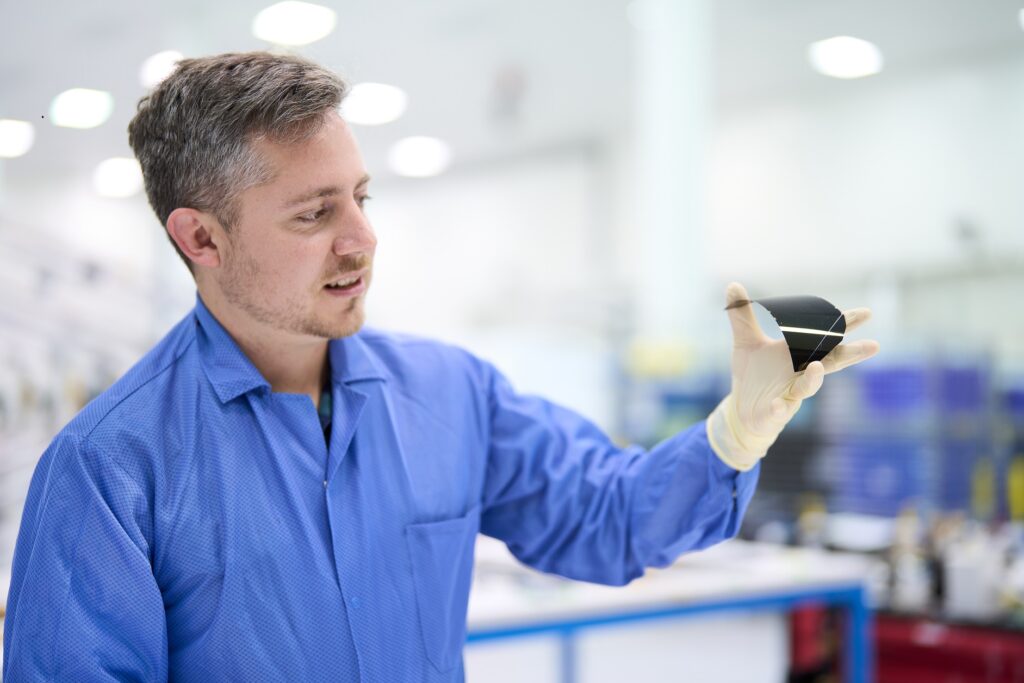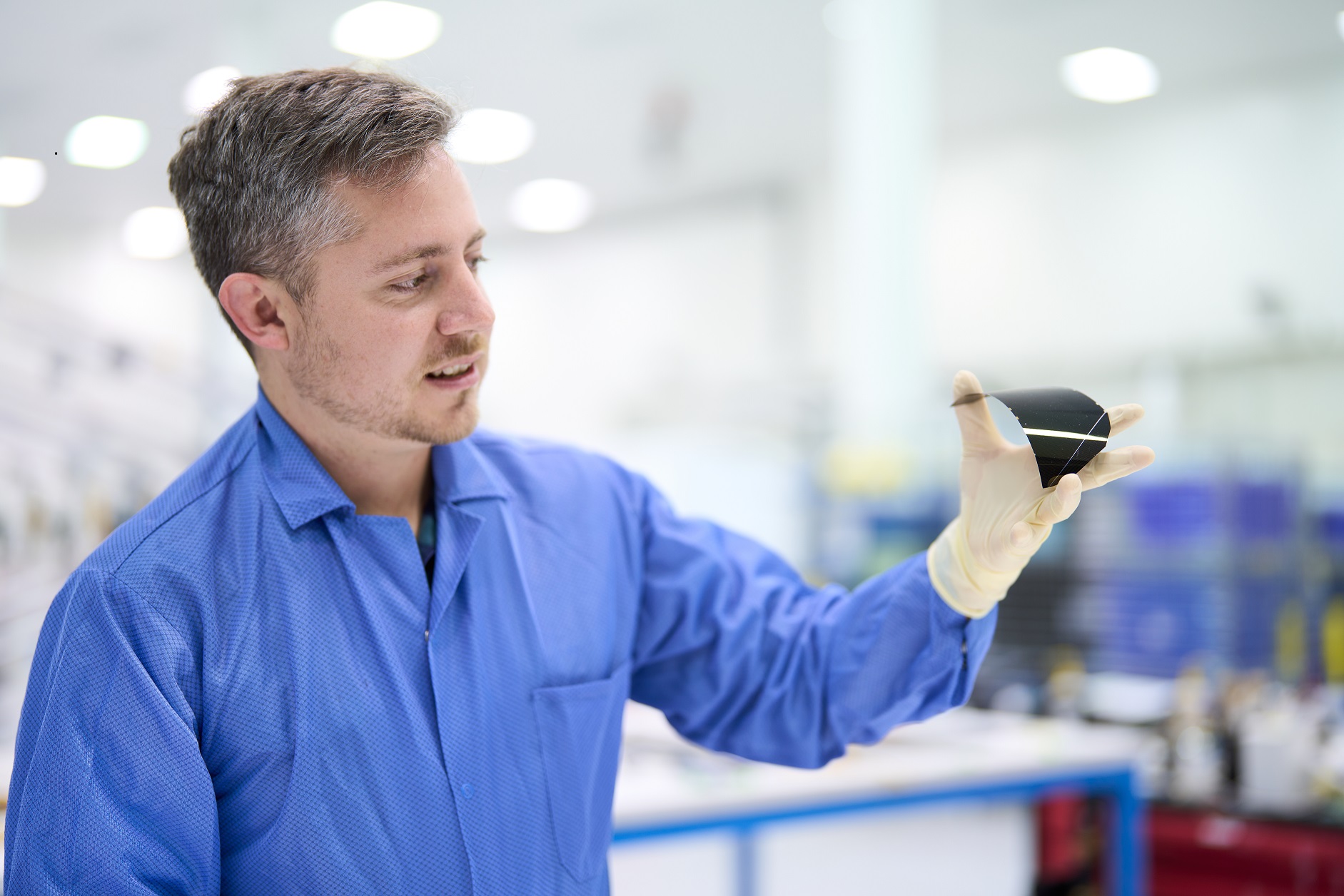
Rocket Lab Continues To Progress With SolAero
The space industry is filled with countless different companies and agencies working on different aspects of spaceflight and much more. Rocket Lab over the past few years has continued to acquire different companies. These acquisitions help provide Rocket Lab with well-tested and available technology which increases what the company can offer to different customers.
Recently Rocket Lab released more information regarding its most recent acquisition of SolAero. Specifically, they announced that its next-generation solar cell technology is transitioning into qualification. This marks a big step as they continue to develop and progress their technology, along with the partnership with Rocket Lab. The cell is the next product from SolAero’s patented Inverted MetaMorphic (IMM) solar cell technology.
Rocket Lab has expressed multiple times how they want to be much more than just a launch provider within the space industry. While they are making great progress with not only Electron but Neutron as well, they want to offer more for customers in terms of satellites and more. Here I will go more in-depth into the most recent news and what it means for Rocket Lab and its future.
Recent Update

Not long ago Rocket Lab acquired SolAero, a premier supplier of space solar power products for the global aerospace market. Very recently with the help of Rocket Lab, they have been making very impressive strides and overall progress. Just a few days ago on the 8th, Rocket Lab tweeted saying, Introducing our highest efficiency & lightest weight solar cell yet: the IMM-β. Developed by @Solaerotech, IMM-β is more than 40% lighter than typical space-grade solar cells & delivers the highest efficiency of any commercial space solar cell globally.” In addition to this update, just a few days later on the 10th Rocket Lab had more to say regarding progress with SolAero. Specifically, they tweeted mentioning, “Our solar panels are getting ready to power @NASA’s Psyche spacecraft on its 2.4 billion km journey to a mysterious, metal-rich asteroid! Check out the arrays being tested at @NASAJPL ahead of the August mission.” It seems that this partnership is moving very fast and Rocket Lab is making good progress with the newest addition to the company.
This solar cell technology is expected to exhibit a conversion efficiency of ~33.3% in volume production. IMM-β is the 4th generation IMM product created by SolAero Technologies Inc., a space solar power company acquired by Rocket Lab in January 2022. The IMM-β solar cell is expected to be the highest efficiency space solar cell technology in high-volume production. The cell boasts an average 33.3% Beginning of Life (BOL) efficiency, up from 32% for the IMM-a that is currently in volume production. The IMM-β is also a radiation-hard cell with a power remaining factor of 87% after exposure to 1-MeV electrons at a fluence of 1E15 e/cm2 or equivalent of about 15 years life in GEO. Now undergoing final space qualification testing, the cells are expected to be ready for commercial use later in 2022. In addition to its best-in-class efficiency, IMM is more than 40% lighter than typical space grade solar cells which helps to make satellites more cost effective. “We’re excited to bring to market this next significant step in solar cell performance,” said Brad Clevenger, Vice President & General Manager, Space Systems Power Solutions. “In partnership with our colleagues at the Air Force Research Laboratory (AFRL), we’re not only commercializing the world’s highest efficiency and lightest weight space solar cell, we’re doing so at the most competitive cost of any IMM technology to date. IMM-β‘s impact on solar array and launch mass will make it a compelling option for satellite integrators.” While it’s only been a few months since the acquisition, the companies are making very impressive progress in many different aspects.
There were more important quotes regarding the news including one highlighting that, “IMM-β’s superior performance is a mission enabler in many applications in the civil, military and commercial space markets. It is also the next stepping stone to even higher performance future IMM solar cell technologies, solidifying SolAero’s segment leading position for many years to come,” added Navid Fatemi, SolAero’s Vice President of Business Development. Rocket Lab also had some things to say regarding the recent news and progress with SolAero. “For 20 years SolAero has been a leader in space solar power innovation and we’re excited to welcome them to the Rocket Lab team as they take yet another technological leap,” said Rocket Lab founder and CEO, Peter Beck. He also pointed out, “The SolAero team has enabled trailblazing science missions to distant interplanetary destinations and powered commercial constellations of hundreds of satellites in low Earth orbit, and with the new IMM-β cells they can power the future of space exploration. Solar power is a crucial part of every spacecraft and SolAero is already home to the world’s largest production line of high-performing solar cells. Now with Rocket Lab’s resources and manufacturing capability behind them we look forward to scaling the business to meet the growing demands of the global space market.” Founded in 1998 and acquired by Rocket Lab in 2022, Albuquerque, New Mexico-based SolAero has produced solar cells, solar panels, and composite structural products for more than 1,000 successful space missions with 100% reliability. Over the past two decades, SolAero’s products have played key roles in some of the industry’s most ambitious space missions, including supplying power to NASA’s Parker Solar Probe, James Webb Space Telescope, and Mars Insight Lander, as well as several Cygnus Cargo Resupply Missions to the International Space Station.
Lastly, Rocket Lab had more to say about solar technology and the upcoming mission tweeting, “The team @NASAJPL putting our solar panels by @SolaeroTech to the test! In August these arrays are headed to the asteroid belt between Mars and Jupiter to support the study of the asteroid Psyche.” NASA’s Psyche mission is almost ready for its moment in the Sun, a 1.5-billion-mile solar-powered journey to a mysterious, metal-rich asteroid of the same name. So far twin solar arrays have been attached to the spacecraft body, unfolded lengthwise, and then restowed. This test brings the craft that much closer to completion before its August launch. They highlight that Venturing to the asteroid belt between Mars and Jupiter, far from the Sun, presents challenges for this mission, which adapted standard Earth-orbiting commercial satellite technology for use in the cold and dark of deep space. Near Earth, the solar arrays generate 21 kilowatts – enough electricity to power three or four average U.S. homes. But at Psyche, they’ll produce only about 2 kilowatts – sufficient for little more than a hair dryer.
Conclusion
Only months ago Rocket Lab added another of many acquisitions to the company. In these cases, Rocket Lab provides the resources and the company helps with specialized and high-quality tested technology Rocket Lab can use and offer to its customers. SolAero has been making a lot of progress apart of Rocket Lab recently as they work towards an upcoming mission with NASA. Specifically, the solar cell technology is working towards qualification before being ready for use. We will have to wait and see how they progress over time and the impact it has on the space industry.
